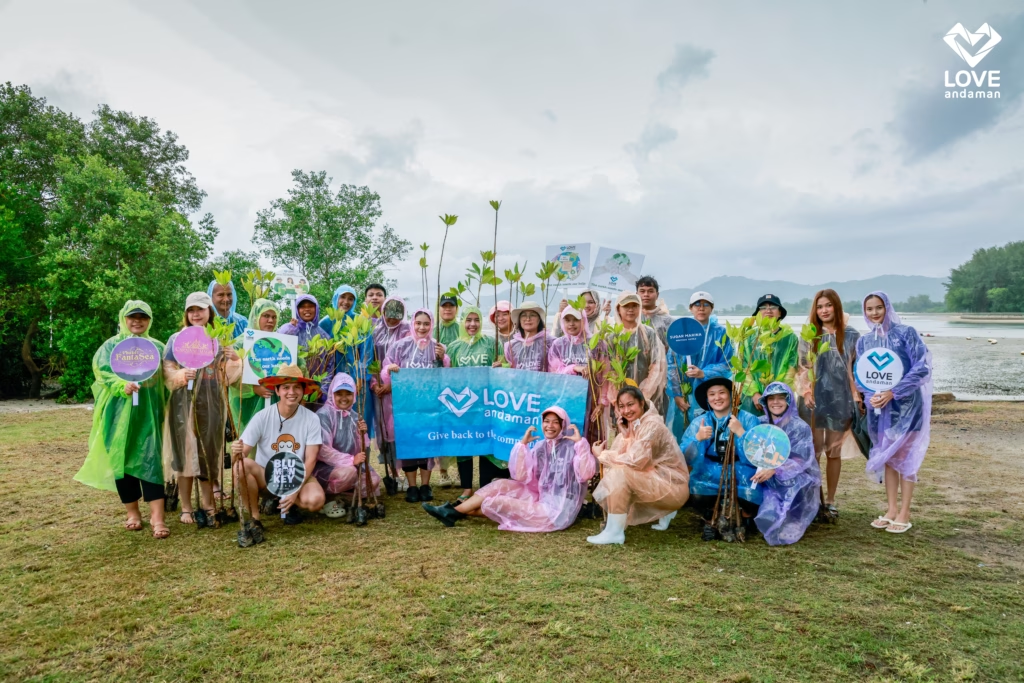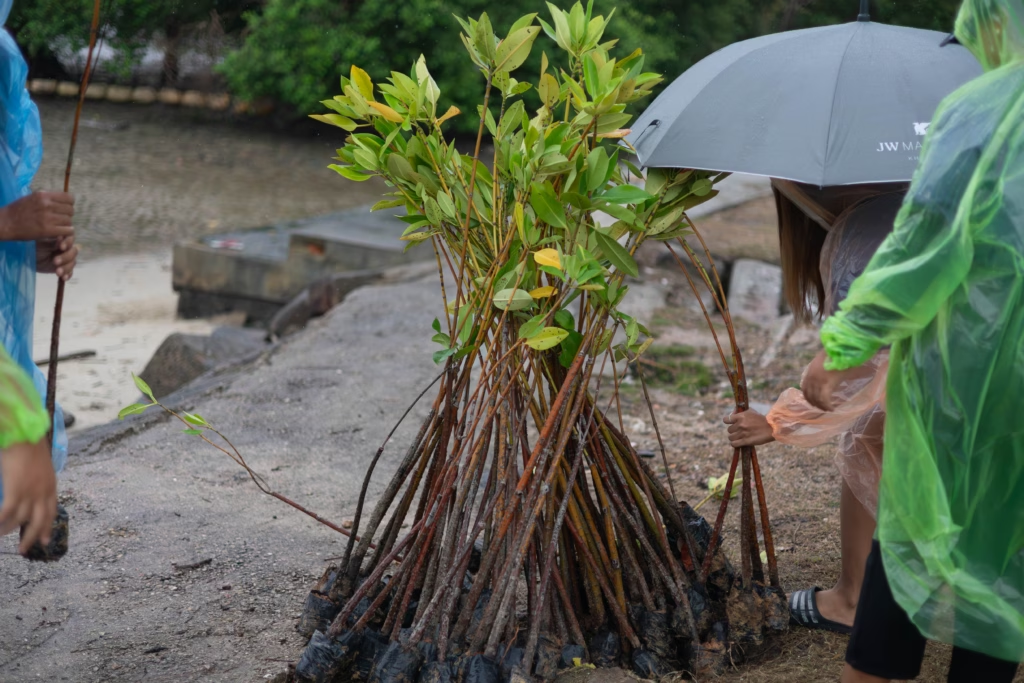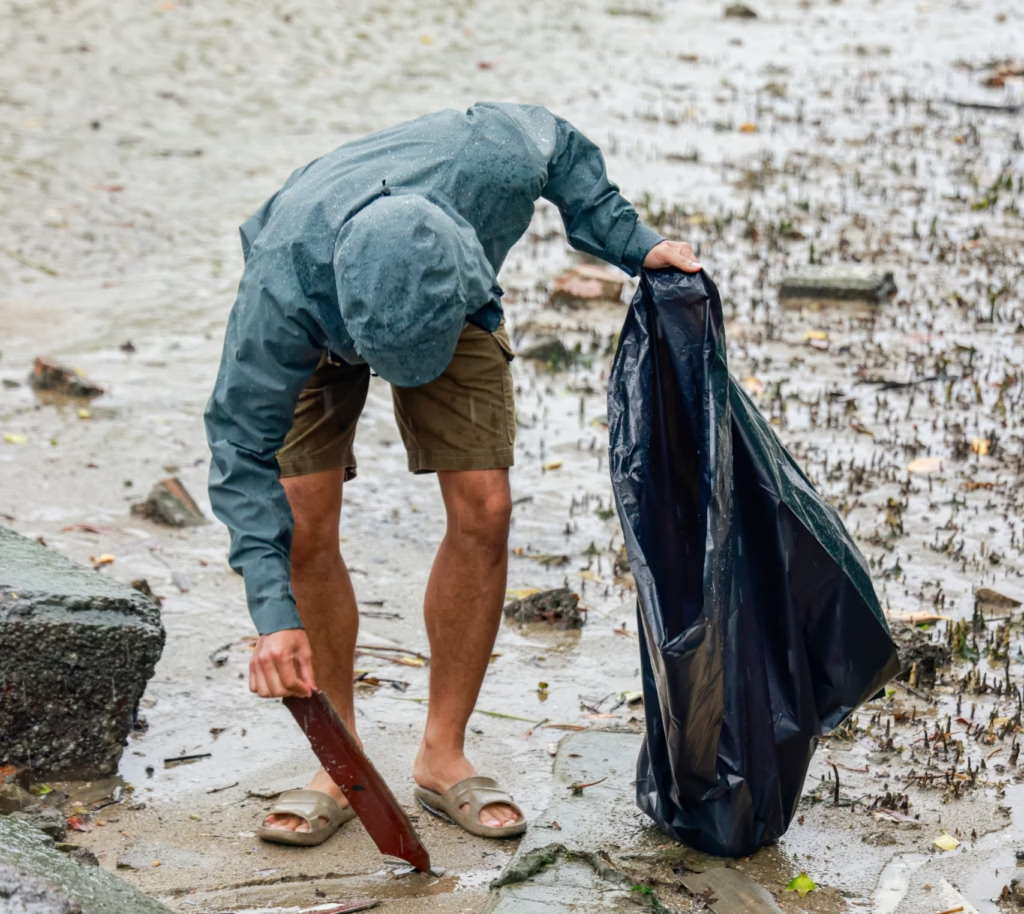Love Andaman’s mangrove planting this time is far more than a standard CSR activity. It’s about getting our hands muddy literally digging holes, planting Rhizophora saplings along Phuket’s shoreline to restore coastal ecosystems and create a natural sea wall that protects the Andaman coast from powerful waves.

Table of Contents
Love Andaman Mangrove Planting
On August 15th, our Love Andaman team joined forces with several partners to organize a mangrove planting activity at Hat Tawan Ron. The day was filled with smiles, determination, and the shared energy of everyone eager to give back to nature.
What Are Mangroves?
Mangroves are unique coastal forests that grow along shorelines, estuaries, and brackish water areas where tides bring in seawater during high tide and expose the soil during low tide. These habitats are made up of mud or sandy soils mixed with sediment, and salinity levels change constantly—making them home to specialized plants and animals adapted to survive in such conditions.
Types of Mangroves in Thailand
1. Fringe Mangrove
- Located along the coast or river mouths where seawater floods daily
- High salinity and deep mud sediment
- Key species: Large-leaf mangrove (Rhizophora mucronata), small-leaf mangrove (Rhizophora apiculata)
- Distinct stilt roots that anchor in deep mud and withstand waves
2. Riverine Mangrove
- Found inland along riverbanks or canals
- Brackish water with lower salinity than fringe zones
- Key species: White mangrove (Avicennia alba), Black mangrove (Avicennia marina), Cylindrical fruit bruguiera (Bruguiera cylindrica)
- Characterized by aerial “breathing” roots protruding from the soil for oxygen intake
3. Basin Mangrove
- Located in low-lying inland basins, flooded only during high tides or storm surges
- Deep mud with high organic content
- Key species: Cannonball mangrove (Xylocarpus granatum), Red ceriops (Ceriops tagal), Mangrove apple (Sonneratia caseolaris)
Why Mangroves Are More Important Than You Think
- Carbon Storage Superpower – Mangroves store 3–5 times more carbon than terrestrial forests. Their deep mud and root systems can hold carbon for centuries, helping reduce greenhouse gases.
- Nursery for Marine Life – Juvenile fish, crabs, prawns, and even certain shark species depend on mangroves for shelter and feeding grounds during their early life stages.
- Coastal Protection – Dense root systems reduce wave energy and prevent shoreline erosion.


Restoring Coastal and Estuarine Ecosystems
Love Andaman Mangrove Planting focuses on restoring degraded coastal and estuarine areas by reintroducing species adapted to brackish environments—such as Rhizophora, Avicennia, and Sonneratia.
It’s not just planting trees—it’s rebuilding homes for mudskippers, fiddler crabs, oysters, and countless marine species. Mangroves also serve as natural buffers, reducing the impact of waves and storms while trapping sediments to keep coastal waters clean.
Mangroves & Ecotourism
Mangrove conservation supports eco-tourism activities such as kayaking through mangrove channels or joining guided wildlife walks. These experiences generate income for local communities while keeping natural resources intact for future generations.
Our Journey Doesn’t Stop at Beautiful Seas
At Love Andaman, we believe true ocean travel goes hand in hand with protecting the environment. Love Andaman Mangrove Planting is just one more step in our ongoing journey—to ensure crystal-clear waters, pristine beaches, and a thriving planet for generations to come.
See more from our activity:
Facebook Love Andaman | Instagram Love Andaman
